Archaeologists unearth secrets of America’s oldest tombstone
The oldest known gravestone in America, long thought to be the tomb of a knight, has a fascinating background that has finally been unraveled.
The tombstone, which was unearthed in the Chesapeake Bay region, was thought to be made of “black marble,” but that now appears not to be the case.
It is in fact fine-grained black limestone, polished to resemble marble. The stone itself dates from 1627 and came here from Belgium across the Atlantic Ocean.
The truth has been published thanks to a new investigation in the International Journal of Historical Archaeology.
The new details came to light after small fossils were found in the stone. The stone did indeed refer to an English knight who was present in Jamestown, Virginia.
A gravestone found in the Jamestown church showing the silhouette of a knight is believed to have belonged to Sir George Yeardly, a colonial governor of Virginia

The gravestone, known as the ‘Black Marble Knight’s Gravestone’, was originally laid in a church in Jamestown in 1617
The gravestone, known as the “Black Marble Knight’s Gravestone,” was originally laid in 1617 in a church in Jamestown.
The shiny, black, polished surface was decorated with copper inlay and possibly depicted a knight with a sword in his hand.
The shiny black stone was especially popular with the English upper class in the 17th century and is the only known gravestone in the English colonies to have brass inlay.
The rare design would have been suitable for a nobleman, while researchers also believe it may mark the burial place of Sir George Yeardley, one of two English knights who died around the time.
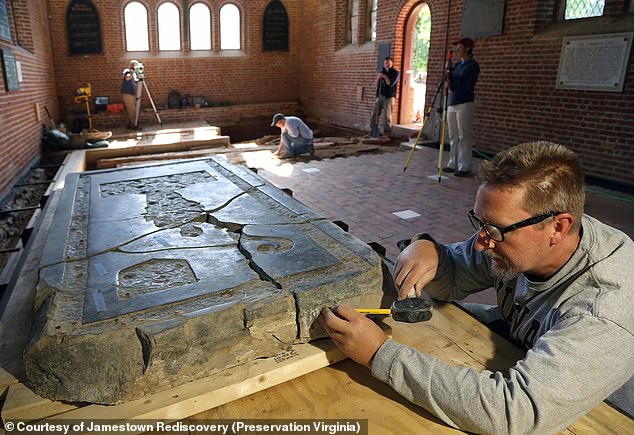
The tombstone, which was unearthed in the Chesapeake Bay region, was thought to be made of “black marble,” but that now appears not to be the case.

The tombstone is not marble, but fine-grained black limestone, polished to resemble marble. The stone itself dates from 1627 and was shipped from Belgium across the Atlantic Ocean.
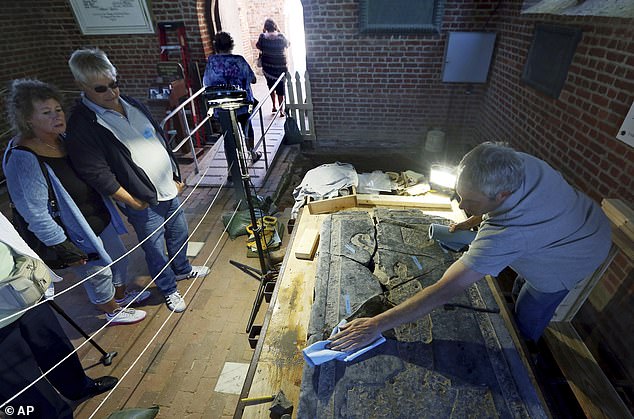
Jamestown archaeologists have uncovered a perplexing historical puzzle dating back 400 years
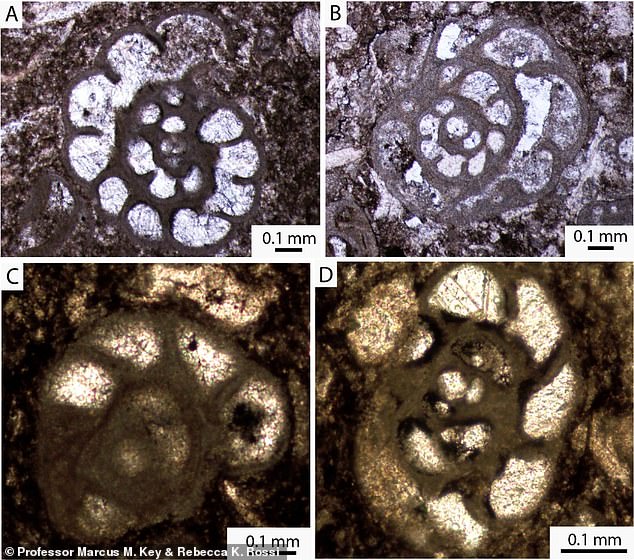
Four types of microfossils were found in the thin sections of the knight’s gravestone. They were found in what is now Belgium and Ireland rather than North America, meaning the knight’s gravestone had to be imported from Europe
To unravel the mystery surrounding the tombstone’s origins, researchers were able to analyze the fossil fragments. They discovered six species of single-celled organisms that only coexisted in Ireland and Belgium, and not in North America.
This discovery, combined with historical data, led archaeologists to conclude that the stone had been imported from Belgium and was evidence of an extensive colonial trade network across the Atlantic Ocean.
Markus Key, one of the study’s authors, said it appears the colonists ordered luxury gravestones from Europe.
“The knight’s gravestone had to be imported from Europe. Historical evidence suggests Belgium, from where it was transshipped in London and made its way to Jamestown,” the authors wrote in the study.
“We had no idea that colonists were ordering black marble gravestones from Belgium, just like we order items from Amazon, only much more slowly,” said Markus Key, one of the study’s authors. Phys.org.
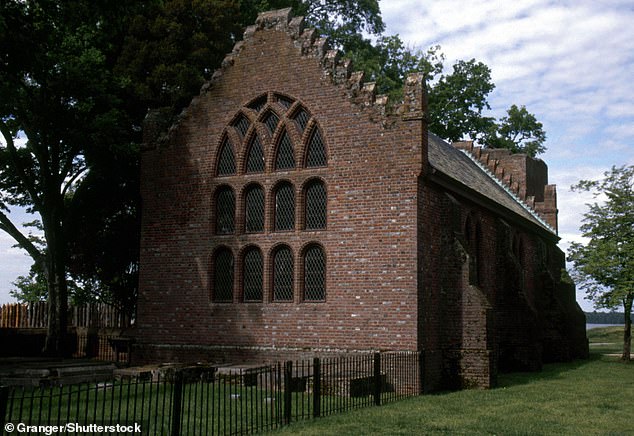
The gravestone was laid at the church in 1617. The church has been rebuilt several times
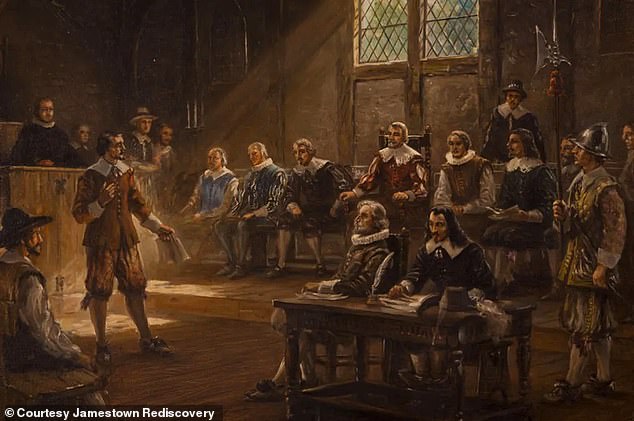
The gravestone is probably that of Governor George Yeardley, seated in red. The photo shows the first General Assembly of America
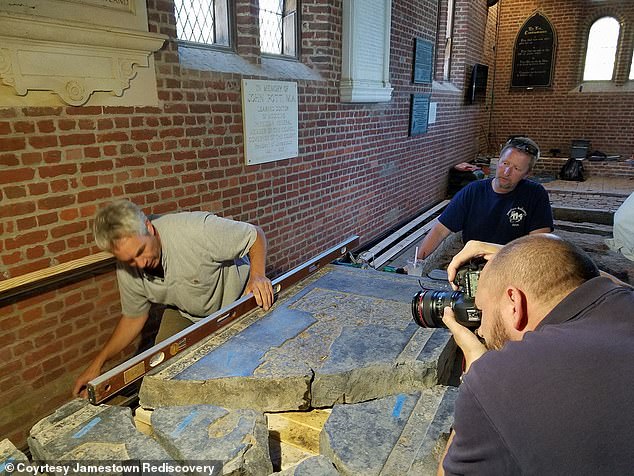
Monument conservator Jonathan Appell is piecing the first pieces of the Knight’s Tombstone back together. The tombstone was first discovered broken in 1901
“The cost of importing the stone to Jamestown, even if it were to be used as ballast, would have significantly increased the cost of the stone itself, the cutting for the brass inlays, and the fabrication and installation of the brass inlays,” the authors explain in the study.
“Whoever is buried under the knight’s tombstone was a prominent member of the Jamestown settlement.”
The headstone was lost for centuries before being rediscovered and restored in 1901. It was then placed in the Memorial Church in Jamestown, Virginia, during construction in 1906.
Despite new insights into its origins, the identity of the person buried beneath it remains shrouded in mystery.
But one thing is clear: whoever they were, their legacy was large enough to warrant importing a gravestone from Europe almost four centuries ago.
